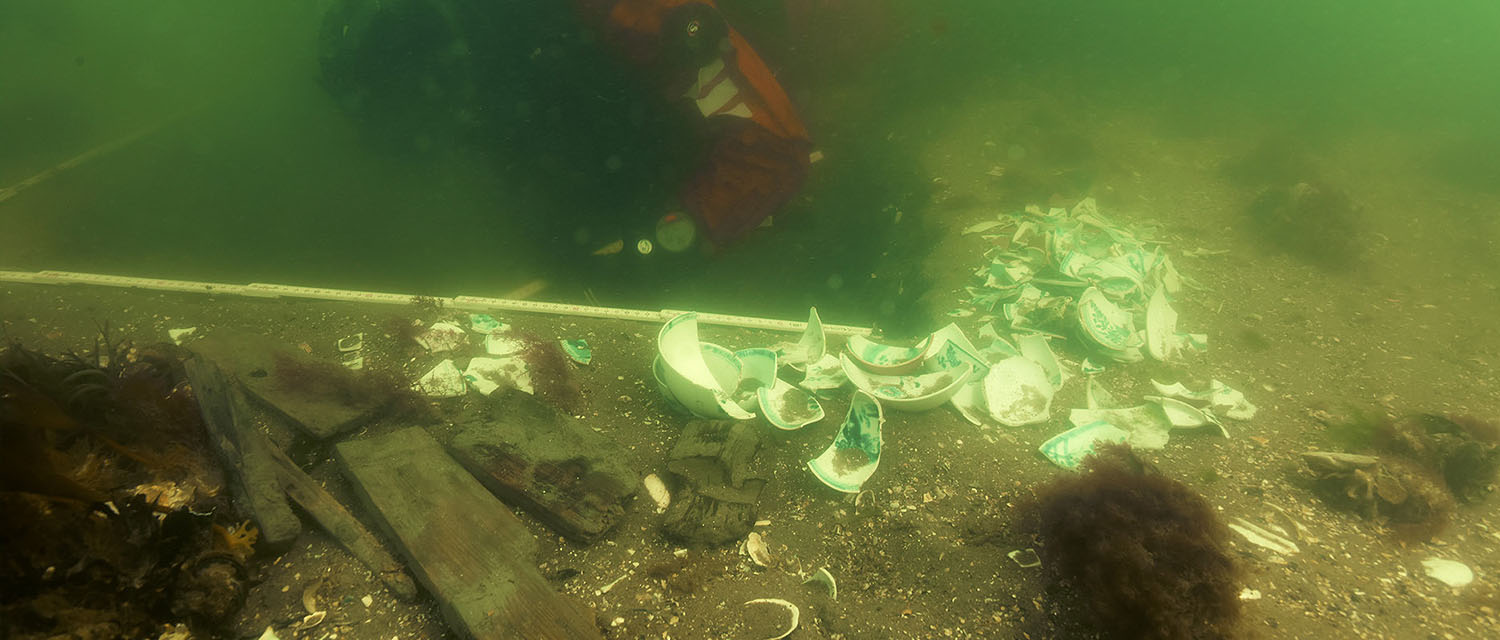The so-called East Indiamen embarked on long journeys that could last for years. When the ships returned, they were loaded with exotic goods. Götheborg had been gone for over two years when it ran aground and sank in September 1745 – almost within sight of the final destination.
Götheborg was launched at the Terra Nova shipyard in Stockholm in 1738. Its first trip to the East Indies took place as early as January of the following year. In March 1743, Götheborg set a course for Asia for the third time and arrived in Canton in China in early June 1744.
The weather and an unbalanced diet claimed many lives among the crew – at least 35 men died during the journey. In Canton, the ship was loaded full of exotic goods, including porcelain.
The journey home to Gothenburg took about eight months. In September 1745, Vinga lighthouse was sighted and a pilot taken on board. But just before the end of the journey, Götheborg gets stranded with full sails on the well-known rock formation Hunnebådan. The bow remained high on the rock as the afterdeck sank.
Salvage operations were started immediately to save the part of the cargo that was still dry and accessible in the prow. Up until 1747 about a third of the cargo was salvaged, so the journey to China was profitable despite the inglorious end.
In 1984, a group of recreational divers and maritime archaeologists carried out a survey of the seafloor at Hunnebådan. The investigation resulted in lots of finds, including several tons of porcelain.
And thanks to the investigation, a full-scale replica of Götheborg could be built. The ship was launched in 2003 and two years later departed Sweden for its first trip to China.


